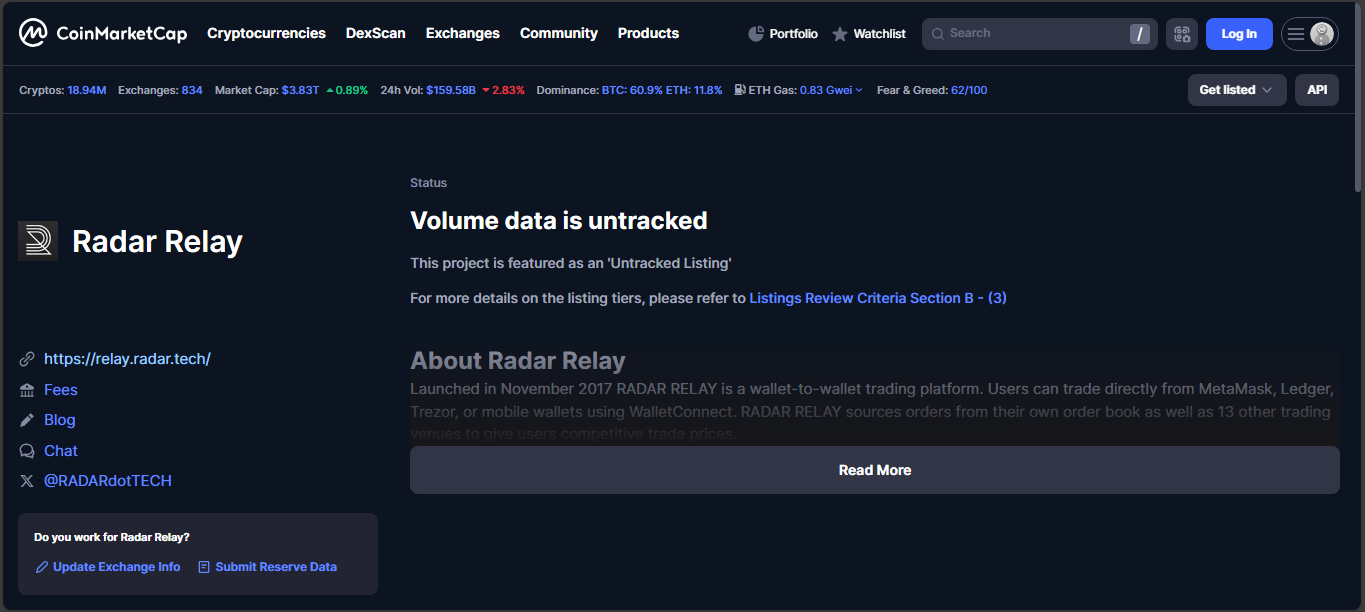Radar Relay - Exchange Review

Radar Relay appeared in 2017 as one of the first wallet-to-wallet trading platforms for Ethereum tokens. Built on the 0x protocol, it allowed users to trade directly from wallets like MetaMask, Ledger or Trezor without giving up custody. Trades were settled on-chain while orders were managed off-chain.
What it was designed to do
The exchange connected traders through a shared order book that pulled liquidity from 0x and other DEX sources. There was no centralized custody - funds stayed in user wallets. Over time, the platform added limit orders, margin options and smart routing.
Early traction and funding
In its early days, Radar Relay reported over 150 million USD in trading volume across more than 175 countries. In 2018 it secured a 10 million USD funding round to boost development and expand its global presence.
What the data shows now
Today, Radar Relay is classified as inactive. Trackers show no coins, no pairs and zero trading volume. Liquidity data is missing, and public records suggest the exchange has no active users.
Model versus reality
Technically, the interface still exists. But without trades or liquidity, it feels like an empty shell. The order book remains online, yet there is no real market activity behind it.
Design intent and theoretical strengths
- Peer-to-peer, non-custodial trades using Ethereum wallets.
- Smart order routing and a simple trading experience.
- A privacy-friendly model with no signups or deposits held by the platform.
Sticking points today
- No trading activity - zero volume makes it unusable.
- No liquidity - depth cannot be confirmed, and orders are absent.
- Dormant ecosystem - community and usage signals have disappeared.
- No updates - there is little communication or roadmap clarity.
Who it would fit (if revived)
If revived, Radar Relay could appeal to Ethereum users who prefer self-custody and decentralized trading with smart routing. Right now, without liquidity, it offers nothing for active traders.
Final outlook
Radar Relay was an important step in decentralized trading. It pioneered wallet-to-wallet swaps and non-custodial order books when the idea was still new. Today, it is effectively inactive. With no users, no trades and no updates, it remains a historical reference rather than a live exchange.
Disclaimer
“This content is for informational purposes only and does not constitute financial advice. Please do your own research before investing.”
.png)







%203.svg)
%203.svg)




















